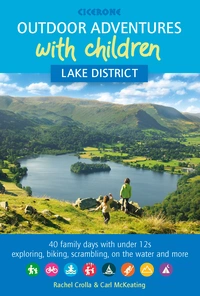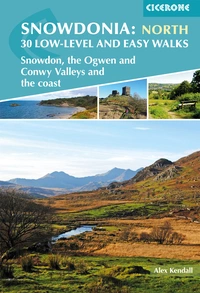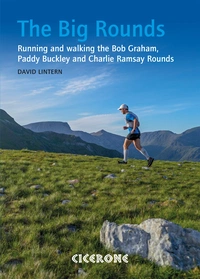Walking with young children - exploring a tidal island
Rachel Crolla and family set out on a storybook adventure to strand themselves for the day on uninhabited tidal island of Hillbre off the coast of the Wirral in Merseyside. She gives tips for how to have a successful outdoor adventure with a young family.
We stared out towards the sea. A sweep of crinkled sand and shallow receding waters spread out before us, daring us to head offshore towards the enticing tidal islands on the horizon. It was undoubtedly one for the wellies. Since the idea of pulling on wellies seems to be unfathomably delightful to the children in our household, our adventure got off on the right track straight away.
Hilbre Island was the destination of our hike and the place where we intended to strand ourselves for five hours on purpose. Hilbre is one of a tiny chain of three tidal islands that lie off the coast of the Wirral in Merseyside and form a local nature reserve that can only be visited on foot at low tide or by boat at high tide. The hike over the sands from the slipway at West Kirby via Little Eye, Middle Eye and the largest of the three, Hilbre Island, would be a four mile round trip. It was somewhere I’d been itching to the take the kids – the oldest (aged four and a half) would walk, while our 20 month old would go in the backpack most of the way.
In fact I defy even the most jaded of children not to get excited by the thought of getting marooned on their own desert island – OK, the desert bit might be stretching the truth a little, but there was plenty of sand and a few tales of smugglers to set imaginations alight. We had carefully researched Hilbre’s tide tables and the weather forecast before striking out across the beautiful corrugated sands towards the clearly visible Little Eye. Families, dog walkers and birdwatchers were all heading inland as we strode out, with a rucksack full of supplies to make our sojourn on the island comfortable. To say we were well-prepared would be an understatement: mum and dad were shouldering copious snacks and drinks, mountains of spare clothing, buckets and spades and even a beach shelter in case the forecast was wrong.
Of course, we didn’t utter the word ‘hike’ to our eldest – she would be going on an ‘adventure’, which was much more appealing.

The useful Friends of Hilbre website suggests allowing an hour to get to the island, setting off no later than three hours before high tide in order to visit in safety. With young children we allowed a fair bit longer, but still felt slightly anxious as we headed away from the shore across the exposed bed of the Irish Sea. Our children dislike being rushed and although they are more than capable of travelling at speed when they so choose, on a hike they can generally find something to spend time digging, collecting, fiddling and messing about. We count ourselves lucky if they are both going even vaguely in the right direction. The first mile to Hilbre took us over wonderfully ridged and textured sand which was crying out to be stamped on, prodded and thrown about, so progress was predictably slow.
It goes without saying that children do not behave like adults on a walk – if there is any hint of water, our kids will always conspire to get soaked to the skin. They also act like magnets for mud. On the tidal flats, there was plenty for our magpie-like eldest to collect. She found shells, driftwood and sea-smoothed pebbles, all of which my partner and I had to ‘promise to take back’. By the time we reached Little Eye, we estimated that we were carrying the equivalent weight of another small child in mussels, razor clams and cockle shells, as well as a few clumps of sodden seaweed. Our toddler was thankfully more interested in pointing out ‘birdies’ and yelping into the sea breeze.

The route to Hilbre is somewhat counter-intuitive as the safest line is to head east then turn north after Little Eye, rather than making a beeline straight for your destination. The tiny lump of Little Eye is not much bigger than an average living room at high tide. Although there was already plenty of water underfoot, it was difficult to imagine that our route would become completely impassable in just over an hour

Ahead of us, Middle Eye stood proud as a grassy hummock at the end of a rust-coloured natural rock causeway. Here flocks of curlews and oystercatchers gathered and barnacles and whelks formed a crust on the ground, which fascinated the children. The little climb over Middle Eye left us exhilarated: there was a sudden change in landscape and the tantalising sight of Hilbre, with its cluster of buildings, only a stone’s throw away. The 100m channel between Middle Eye and Hilbre looks innocuous, but fills remarkably quickly with the incoming tide. We reached a welcoming coarse yellow beach beneath red sandstone bluffs and settled down to our picnic, pleased to have made it across to solid ground in good time. Half an hour later the sea provided its own explanation of the tides that even our four-year-old understood, as the water sloshed through the channel and cut us off completely from the mainland. A foolhardy older couple raced the incoming waters in a bid to return to West Kirby. We wondered if they had left it too late and might end up spending the day twiddling their thumbs on Little Eye. As they disappeared from view we realised we had the 11 acre island entirely to ourselves on a sunny Sunday in March. ‘It’s our island now!’ screeched our four-year-old, who had been learning about pirates at school.
Hilbre is the perfect size to be marooned on for five hours, as there is plenty for children to see and explore. Sandcastles were erected then swiftly washed away by the encroaching tide that busily swallowed all but a sliver of our picnic beach. We had time to rest both little and larger legs before venturing off to discover ‘our’ island. Hilbre has a path leading along its length to an abandoned lifeboat station: with its ramp and hefty iron ladder up the sea cliff, this proved as good a playground as any. There’s an old telegraph station and some wooden steps leading up to the highest point of the island, offering superb views of the coastline. There are steep steps down to rocky coves and a smugglers’ cave to find. It should go without saying, but children do need to be closely supervised on the island as there is a heady mixture of cliffs, deep seawater and rickety fences that could prove irresistible to toddlers. Hilbre has no shops or public running water, little shelter and no facilities apart from some composting toilets. There have been no permanent residents since 2012, and just a handful of privately owned cottages remain. It is a place simply to relax outdoors.

Our children adored the island. My one regret is that we didn’t find a place among the colouring books, beach shelter and first aid kit for some binoculars to watch the wading birds dabbling and the sea-kayakers paddling by. We had packed for the worst case weather scenario, and were pleasantly surprised that the children could run around in T-shirts.
Suddenly, our excited toddler heard something familiar. ‘Doggy, doggy!’ she announced, proudly enunciating one of her few words. We listened. There did seem to be a barking noise coming from the sea. After scanning the waters, we were delighted when the ‘doggy’ actually turned out to be a seal inquisitively milling around the shoreline.
It was time to hike back all too soon and we knew that two challenges were facing us: tired children who wanted to stay put, and a long hike back. A backpack is perfect for a weary toddler but our eldest required a few power snacks and being given the job of ‘finding the way back’ to make progress. A mud pie fight on the sand also seemed to recharge some of the batteries. The end of a hike with children can be difficult; you wonder whether you’ve walked too far and why children seem to perfect the art of whingeing at such a very young age. Our children have been taken on walks from birth, but hiking still requires a bit of cajoling and distraction. Longwinded stories from Daddy, jokes, spotting challenges and games usually do the trick. And with persistent whining, there’s always bribery to resort to (we had some emergency Smarties for this eventuality).
There is no doubt that hiking with young children can be a challenge. Amid the moans of ‘how much further?’, the wet socks and runny noses it can sometimes be difficult to see a walk of more than a mile or so as anything other than an ordeal. But I’d say just go and do it anyway: you’ll feel good about letting the kids experience exciting outdoor environments, exercising and getting some fresh air in their lungs.
It’s not always plain sailing admittedly, but when you get it right and you finish an exhilarating hike with your kids, then there is no better feeling than a ruddy-cheeked little face turning towards you to tell you ‘that was the best day ever, Mummy.’













